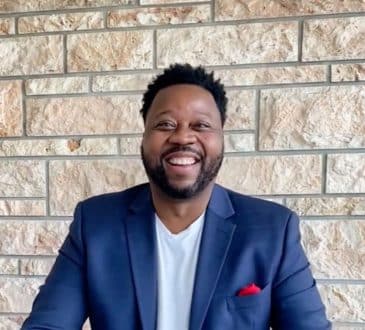Why Measuring Employee Engagement is Insufficient to Transform Culture

Employee engagement is one of the most used organizational metrics for the health of a company’s culture; however, CEOs are increasingly recognizing that only measuring engagement falls short of creating real cultural transformation. Why is that? Unfortunately, simply measuring and getting results about the level of worker engagement is not enough to actually improve it.
Engagement is defined as the emotional connection and commitment an employee has to their job, team and organization. It’s an outcome all companies want to achieve because a highly-engaged team is more productive, with positive morale and high employee retention. Sadly, worker engagement has fallen flat in recent years, remaining below pre-pandemic levels. In quarter one of 2024, US engagement hit an 11 year low, with a slight improvement in the second quarter of 2024, according to Gallup. Organizations can’t keep measuring engagement on its own and expect different results.
As a public company CEO coach and organizational psychologist, I often speak with executives who are concerned about low engagement scores but have no idea why these scores go up or down each year. Without this understanding, they don’t have assurance that the engagement initiatives they are focusing on will make a difference.
The problem is they haven’t measured the key levers that actually move the needle to improve engagement. Companies must understand and measure these levers to create productive and cohesive teams and thriving cultures.
To explain this concept, Zack Wieder, CEO of Principles, shares the metaphor of the “swing vs. the shot.” If you’re a golfer, you know that you won’t improve your game by only looking at your score at the end of each round (i.e., how many good or bad shots you hit). You improve your game by focusing on the mechanics of your swing and improving your technique. The quality of each shot will vary depending on a number of factors, but the way to make all of your shots better over time is by focusing on your swing.
Organizations keep measuring whether they played a good or bad round, i.e. their annual engagement, versus looking at the actual swing, i.e. the fundamental elements that are driving it and can actually improve the outcome.
Instead, to improve and transform culture, companies must understand and measure the elements that create highly productive and cohesive teams and thriving cultures.
Given this picture, it’s no surprise that about 70% of culture transformations fail, according to McKinsey.
Here are common problems I see when organizations want to transform culture, which contribute to efforts failing:
- Organizations try to do everything at once.
- Organizations don’t know what they are trying to change.
- Culture change efforts focus on quick fixes or one-off efforts.
One of the biggest issues I see is that organizations are constantly changing course by implementing a one-off training program or adopting the “flavor of the week” for a new topic that generates excitement. The problem is these surface attempts at change are not connected to the strategy. Workers and leaders quickly lose interest before they are replaced with the next flavor of the week topic.
Ultimately, improving engagement requires a long-term focus to transform culture. Yet, organizations often lack a roadmap for how to effectively change culture.
The reality is companies face significant challenges in understanding and shaping culture, which can’t be solved by surface level fixes. The failure to adequately shape culture can lead to:
- Poor communication across departments and teams.
- Lack of clarity about roles and responsibilities.
- Disconnection among employees, particularly in remote or hybrid environments.
- Insufficient recognition of employee contributions.
- Ineffective collaboration and teamwork.
These issues can lead to high turnover, disengagement, and missed growth opportunities. Overcoming these challenges are key to creating a thriving culture.
Culture transformation requires a more comprehensive approach. It involves shifting underlying fundamental elements about how employees interact, make decisions, and approach their work.
Of course, culture can seem big, elusive, and hard to grasp. Even when approached effectively, it takes an average of three years to truly transform an organizational culture. Nevertheless, there’s a path.
To be successful, executives must provide a clear framework of what they are focused on, why, and where they are at in the journey. Culture change must be integrated into all aspects of the organization, from learning and development, to meeting culture, to how employees show up every day.
The first step for organizations is to move beyond the conventional employee engagement metrics and implement new metrics that look at the actual elements that are core to a healthy and thriving culture.
Our organization’s research center, the Leader and Organization Vitality Center, in partnership with the Principles Team, recently conducted extensive research on team performance and culture. The goals were to understand the known elements that improve team cohesion and culture and how to start measuring these elements in organizations.
We discovered five key elements that improve team cohesion and culture:
- Connection within a team and organization reflects the ties that everyone feels with the entity’s ethos and with their colleagues.
- Candid communication is about straightforward, unambiguous discourse among all members of the team and organization.
- Clarity in a team and organization refers to how clear people are in terms of their responsibilities, the processes they follow and the overarching goals.
- Collaboration measures how well people support each other and hold each other accountable for their performance.
- Contribution reflects how team actions align with the organization’s core values, goals and impact.
Each of these scientifically validated elements can be surveyed and measured. Our research suggests that they account for roughly half the variance in all employee job satisfaction and nearly 80% of the variance in employee satisfaction with the organization’s culture. Once organizations have insights about where they stand on these specific elements of teams and culture, leaders can build an actionable and measurable plan for transforming culture.
With a comprehensive approach, organizations will see improvements to fostering a healthy, high-performing team environment and workplace. Outcomes include:
- Increased open communication and trust.
- Clarity on roles, processes and goals to improve efficiency.
- Improved employee connections that promote a shared sense of purpose.
- Recognition and alignment of individual contributions with broader organizational goals.
- Enhanced collaboration and high-performing teams.
This is such a critical moment in time where organizations are trying to figure out how to optimize culture and redefine the workplace after the pandemic. The companies that outperform in years ahead will be those who emphasize building cultures that enhance individual and team performance. Organizations can’t achieve these outcomes by measuring engagement alone. Truly transforming workplaces will require measuring all the elements that create extraordinary cultures and drive the highest performance.
Written by Dr. Jamie Shapiro.
Have you read?
Richest Countries In Europe In 2024.
Most Attractive Countries To Private Equity, Venture Capital, and Hedge Fund Investors.
Revealed: Highest-paid news media executive in the United Kingdom.
Countries Leading the Way on Climate Change.
World’s Best Countries For Adventure Tourism.
Bring the best of the CEOWORLD magazine's global journalism to audiences in the United States and around the world. - Add CEOWORLD magazine to your Google News feed.
Follow CEOWORLD magazine headlines on: Google News, LinkedIn, Twitter, and Facebook.
Copyright 2025 The CEOWORLD magazine. All rights reserved. This material (and any extract from it) must not be copied, redistributed or placed on any website, without CEOWORLD magazine' prior written consent. For media queries, please contact: info@ceoworld.biz








